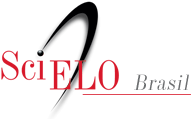Ergosterol isolated from the basidiomycete Pleurotus salmoneostramineus affects Trypanosoma cruzi plasma membrane and mitochondria
1 Center for Parasitology and Mycology, Instituto Adolfo Lutz, Avenida Dr. Arnaldo, 351, 8° andar, CEP 01246-000, São Paulo, SP, Brazil.
2 Institute of Tropical Medicine of São Paulo, University of São Paulo (USP), São Paulo, SP, Brazil.
3 Institute of Environmental, Chemical and Pharmaceutical Sciences, Federal University of São Paulo, São Paulo (UNIFESP), Diadema, SP, Brazil.
4 Laboratory of Biochemistry and Biophysics, Butantan Institute, São Paulo, SP, Brazil.
ABSTRACT
Background
Major drawbacks of the available treatment against Chagas disease (American trypanosomiasis) include its toxicity and therapeutic inefficiency in the chronic phase of the infection, which makes it a concern among neglected diseases. Therefore, the discovery of alternative drugs for treating chronic Chagas disease requires immediate action. In this work, we evaluated the mushroom Pleurotus salmoneostramineus in the search for potential antiparasitic compounds.
Methods
Fruit bodies of the basidiomycete Pleurotus salmoneostramineus were triturated and submitted to organic solvent extraction. After liquid-liquid partition of the crude extract, three fractions were obtained and the bioguided fractionation study was conducted to isolate the active metabolites. The elucidation of the chemical structure was performed using GC-MS and NMR techniques. The biological assays for antiparasitic activity were carried out using trypomastigotes of Trypanosoma cruzi and murine macrophages for mammalian cytotoxicity. The mechanism of action of the isolated compound used different fluorescent probes to evaluate the plasma membrane permeability, the potential of the mitochondrial membrane and the intracellular levels of reactive oxygen species (ROS).
Results
The most abundant fraction showing the antiparasitic activity was isolated and chemically elucidated, confirming the presence of ergosterol. It showed anti-Trypanosoma cruzi activity against trypomastigotes, with an IC50 value of 51.3 μg/mL. The compound demonstrated no cytotoxicity against mammalian cells to the maximal tested concentration of 200 μg/mL. The mechanism of action of ergosterol in Trypanosoma cruzi trypomastigotes resulted in permeabilization of the plasma membrane, as well as depolarization of mitochondrial membrane potential, leading to parasite death. Nevertheless, no increase in ROS levels could be observed, suggesting damages to plasma membrane rather than an induction of oxidative stress in the parasite.
Conclusions
The selection of naturally antiparasitic secondary metabolites in basidiomycetes, such as ergosterol, may provide potential scaffolds for drug design studies against neglected diseases.
Key words: Pleurotus salmoneostramineus; Ergosterol; Trypanosoma cruzi; Mechanism of action
Funding
This work was supported by grants from São Paulo State Research Foundation (FAPESP 2013/50228-8, 2016/24985-4) and scholarships from CAPES.
Received: February 3, 2017.
Revised: May 19, 2017.
Accepted: May 30, 2017.
Correspondence: atempone@usp.br


